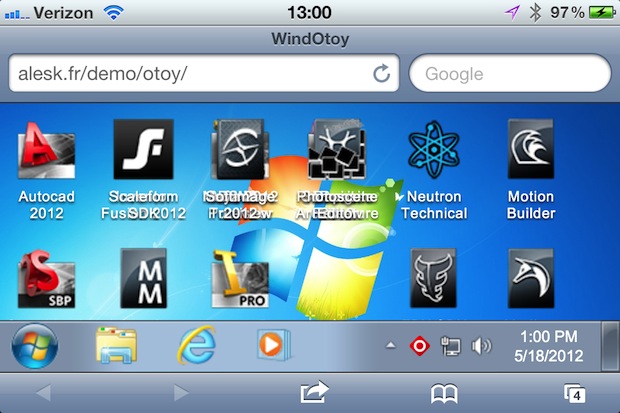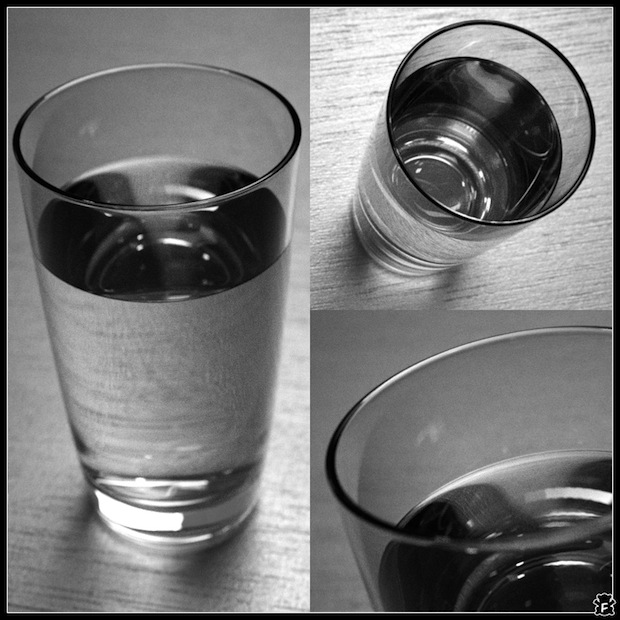Otoy, the company behind the tech that made Benjamin Button age in reverse and the actors playing the Winklevii look identical in "The Social Network," is developing tech to flawlessly port any image, game, or app into any device.

Self-taught programmer and Otoy CEO Jules Urbach thinks you should be able to get a photorealistic image, a game, or an app on any decent computer screen, regardless of your operating system, device, or operating processor.
His solution is a tech that promises to shatter the walls between Apple, Google, Sony, Microsoft, and their associated apps and app stores--not to mention the makers of graphics processors and devices which seem to constantly need upgrades to keep up with the latest software.
Users "don't need computers," to use Otoy's tech, Urbach explains to Fast Company. "All you're going to need is a screen." He's designed a novel way to capture, render, and stream images and port everything from high-powered applications and processor-taxing games and video to a browser window on almost any device using a remote super-computer.
Urbach has already made a splash with Light Stage technology, a 360-degree image-capturing orb that looks like something out of Contact or Sphere. It helped power the age-defying magic in The Curious Case of Benjamin Button and created digital doubles of the Winklevii in The Social Network (the Winklevoss twins were actually created from one actor's face, Armie Hammer). Hollywood has also used the technology to digitally duplicate actor's faces and allow them to play young roles for the rest of their lives. Tim Hawkins, the technologist who helped develop Light Stage, shared a technical Academy Award for his work.
Now extensions of the compression and transmission end of Urbach's technology are being used to free cinema-quality video games and apps from their proprietary devices, app stores, and operating systems, even for users who don't have tricked-out machines. Early demos of the gameplay tech were impressive.
But Otoy's plans are more ambitious than games. The company aims to eliminate the need for any content middleman, from the Xbox to Blu-ray. With streaming content, "There's no gatekeeper; there's not Apple, not Sony, not Microsoft," Urbach says. "I can run it in Safari."
Any App, Anywhere, No Upgrade Required
"The only limit of an application you have today is the device it's running in," Urbach says, adding that consumers shouldn't be constrained by computer power, mobility, or an operating system. Otoy's only limitations are a 4G connection, over which the broadcast can be streamed.
In a demo, I was able to use my smartphone and iPad to call up a windows emulation running in near-real time with some hefty applications (screen shot below)--apps that aren't supposed to run on Apple's proprietary devices. And at Otoy headquarters in Downtown Los Angeles, I saw the Otoy app rendering interactive Transformers-quality graphics designed to run on a full-blown PC in real time--on an iPad.

Otoy's initial plans are to roll out the service to digital artists for a $99 monthly fee. Game and movie creators, explains Otoy president, Alissa Grainger, are a perfect proving ground for the workability of Otoy's concept in a computation-intensive industry and also a strategic entry point to become the industry standard.
Becoming the standard tool for creators would give the company a leg up in the space where Otoy does have competition: on-demand gaming, which allows users to play video games without an expensive console, right in their web browser. The infant space is already crowded with eager startups like Gaikai and OnLive, which have begun offering mobile gamers access to the year's hot titles. Urbach insists that competitors can't match his new data-crunching super-algorithm, and early comparisons (video below) seem to confirm his confidence.
[youtube hvZKmSvOxMY]
Beautiful Light Makes The Virtual World Seem Realistic
"Your eyes only see light beams," explains Urbach, about the inexplicable reason we can sense when computer images don't seem real. "Your brain is wired to understand what humans look like, what a scene looks like, what light looks like. And, if you see something off, your brain knows that at some level."
Much of the effort that went into designing Otoy's patented video-rendering algorithm went toward capturing the peculiar qualities of light, especially for the hard-to-render transparent properties of water and glass, which not even the most expensive action films bother perfecting. Check out the ultra-realistic rendering of a glass of water (below) designed by one of the early adopters of Otoy's art tool, Octane.

Another Otoy user created an architecture video of office furniture (below) so realistic that he had wreck the scene with cartoon blocks just so that viewers could see that the room was a digital creation.
[vimeo 25686881]
Optical effects require enormous computational power to trace light through all of the layers of shadow that typically make up something as simple as light refracted through a glass of water (known as "caustics"). Urbach tells Fast Company that, unlike traditional ways of rendering light, Otoy has figured out a way to predict the path of light beams--a computational savings that adds up when rendering a virtual world of millions of objects (Otoy's process is secret, so we cannot verify exactly how it's done).
The second half of Otoy's magic was unloading computational tasks off of the CPU, which processes data serially like an "assembly line," and onto a relatively inexpensive piece of hardware capable of parallel processing, the graphics card.
While Urbach says we should expect photorealistic video games in the near future, Otoy is already creating digital replicas of A-list actors' faces, which allows them to play young roles for the rest of their lives. "They never get old," says talent agent Ari Emanuel, who is now encouraging his clients to get scanned with Otoy's Academy Awarding-winning technology, so that they can appear young on-screen for the rest of their careers.
A Bright Future
Some of Silicon Valley's most prominent investors are secretly betting that Urbach's technology could have a big return. Indeed, the potential user base of Otoy is--well--almost everyone with a cell phone or computer. Consumers with a reliable Internet connection could replace bi-annual upgrade trips to the Apple Store for Otoy's monthly cloud service. With Otoy's video compression technology, Telecom providers and video on-demand services could stream hi-def movies at a fraction of the bandwidth. Given that Netflix hogs 32% of all U.S. bandwidth during peak hours, the implications are being felt by even those who don't license Otoy tech.
Movie studios and age-conscious actors are already paying Otoy a hefty fee to create their digital doubles. E-commerce sites, which are getting into the virtual fitting room game, could be the next customer, as Urbach showed me a device he rigged up in his part time that digitally scans everyday objects with photorealistic accuracy.
Urbach's unusual creative obsession with light stems his boyhood science-fiction dreams of a virtual world. At a young age, Urbach was taken from his "blissful" home in the countryside of France; upon return, commercial development had ruined the once prestine landscapes. The promise of a Star Trek-like Holodeck, he explains, could grant everyone, rich or poor, their own personal sanctuary.
"Certainly people paint for that reason, they make movies for that reason, they create art for that reason. For me, a painting or one of these things wouldn't do it for me," Urbach concludes. "Some people say you can't go home again, but this would be my best shot at that."
Otoy still has to prove it can monetize this technology, after years as a public relations gopher, occasionally rearing its head to tease the press with impressive demonstrations. But, to the extent the future of the Internet is video, and the future of video is Otoy, Urbach is an innovator that could be one of the great disruptors in the making.
[Image: Flickr user Thomas Hawk]
DIGITAL JUICE
No comments:
Post a Comment
Thank's!